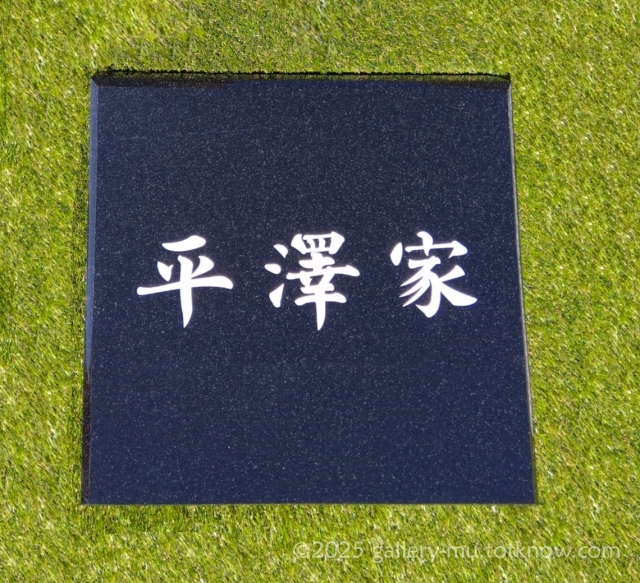

Introduction to an example of writing a family name on a gravestone
Recently, we received a commission to write (in brush calligraphy) the family name that will be carved on the front of a gravestone.
The characters engraved on a tombstone are a precious thing for the family, to be passed down through generations. Therefore, I took up the brush not simply to write “letters,” but with the feeling of remembering the deceased and embracing the feelings of the bereaved family.
The client came from a very earnest (serious-minded) household, and they had a request regarding the letterforms: “We would like something that is dignified yet also has a sense of softness.”
We therefore presented two options:


- One in the clerical script (隷書 / “Reisho”) with thick strokes and a sense of weighty presence.
- Another in the standard script (楷書 / “Kaisho”) whose skeleton is well balanced but with added looseness (行意) to bring softness.
Both were finished with awareness of combining strength and calmness, so that when carved into stone they would remain legible for a long time and also look neat and composed.
In the end the latter (the Kaisho-based option) was chosen. After that, working with the stonemasonry workshop we adjusted the outline and size of the characters, then the carving was carried out and the work was completed. The written characters now stand quietly in the gloss of the black granite.
From the family we received the words: “It became an atmosphere that is warm yet dignified,” and as the calligrapher I feel very grateful.
Calligraphy is not only for paper or hanging scrolls — when it is carved into stone like this, it remains semi-permanently and is inherited by the future. Realizing this weight once again, it became an opportunity for me to engrave into my heart the responsibility of every single brush stroke.

